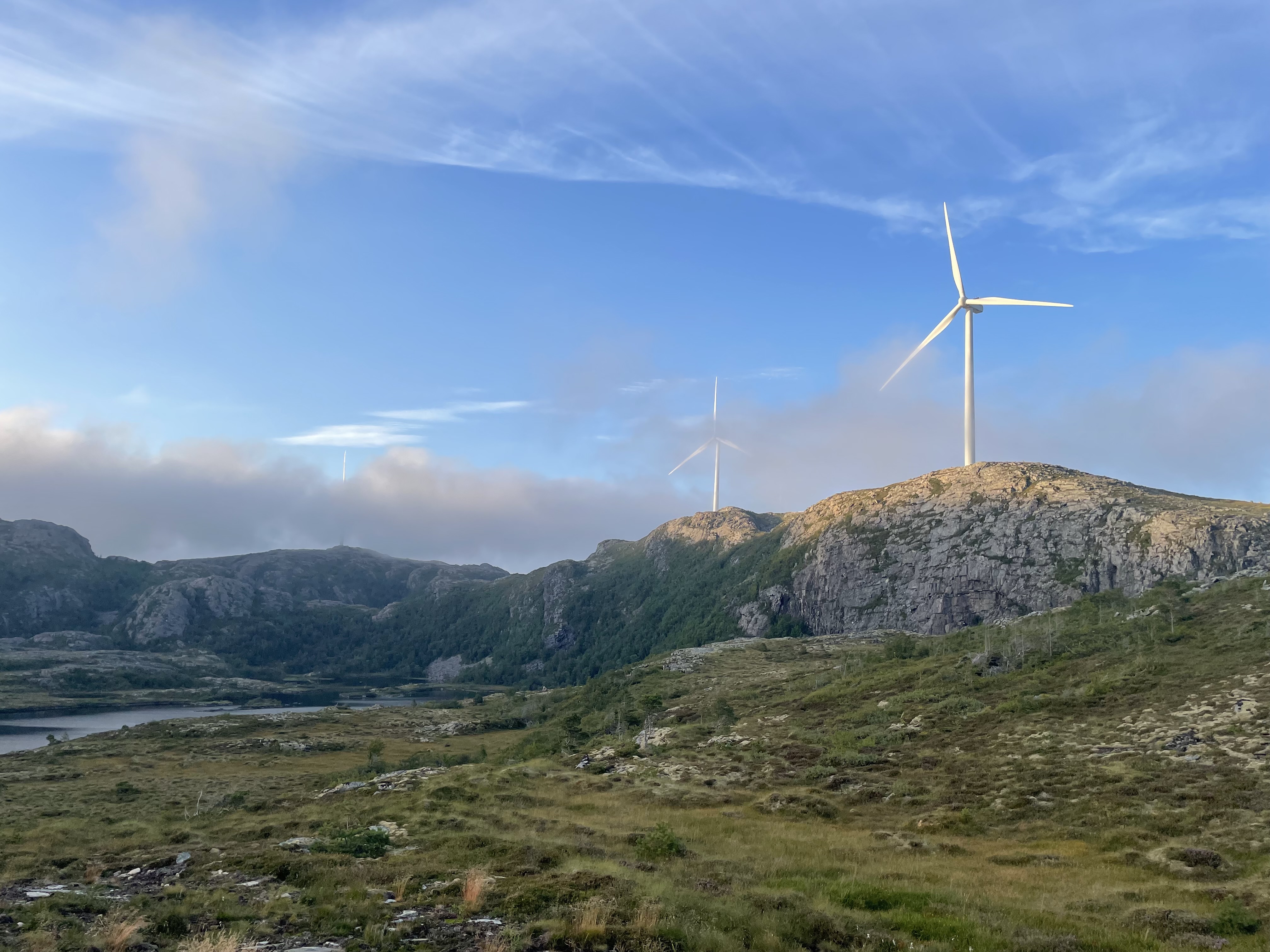
Wind turbine in Norway, where both thermographic and visual measurements were taken for the reference data set.
Source: BAM
Project period
Project type
BAM project
Project status
Ongoing
Description
In KI-VISIR, a reference data set with thermographic and visual inspection data of wind turbine rotor blades is created and made publicly available
Location
Bundesanstalt für Materialforschung und -prüfung (BAM)
Unter den Eichen 87
12205 Berlin
Source: BAM
Source: BAM
Source: BAM
Source: BAM
The project, part of QI-Digital, demonstrates the importance of reference data for a digital quality infrastructure. The reference data set was created by combining thermographic and visual inspection with AI-based image recognition. In addition to BAM, ROMOTIONCAM with its patented visual inspection system and the Marburg start-up LATODA, which specialises in AI-based image recognition, were also involved.
Thermography as an inspection method for rotor blades
Background: Rain erosion on rotor blades
Wind turbines play a key role in achieving global climate targets. However, their efficiency depends heavily on the condition of the rotor blades, which convert wind into kinetic energy. Rotor blades are highly developed aerodynamic structures that are designed for optimum flow conditions. A key problem for their performance is rain erosion at the leading edge of the rotor blades. When rain or other particles hit the blades, microscopic damage can occur, leading to erosion damage over time. Such damage may cause an early transition from laminar to turbulent flow, which significantly reduces aerodynamic efficiency. The result is reduced energy production, which can amount to up to 3.7 % of annual energy production. The effect of this erosion is not only reduced performance, but also increased stress on the structure, which can lead to premature material fatigue. To minimise this damage and maximise energy yield, regular inspections of the rotor blades are essential.
Thermographic inspection of rotor blades and its influence
Thermographic inspection has become established as an effective method for the early detection of erosion damage. In this process, the temperature distribution on the surface of the rotor blades is measured using an infrared camera. Turbulence caused by surface damage changes the local temperature of the blade. These temperature differences can be visualised in thermograms. The influence of such damage extends beyond the surface level: the internal structure of the rotor blade, the thermal properties of the material, and external factors such as solar radiation and environmental influences also play a role. For example, solar radiation can cause significant temperature differences, which appear as anomalies on the thermograms, but do not represent actual damage. Similarly, the wind flow around the blade influences the temperature measurements, since turbulent flows can lead to increased heat transfer. These complex interactions require precise analysis to distinguish actual damage from harmless surface effects.
The advantage of AI image evaluation for No-Downtime inspections from the ground
A decisive advance in inspection technology is the use of artificial intelligence (AI) for automated image evaluation. While conventional inspection methods, often carried out by industrial climbers, are time-consuming and expensive, visual and thermographic inspection from the ground allows for a quick and cost-effective analysis. However, the challenge lies in interpreting the data, especially in the case of thermographic images: Thermograms are complex and contain a wealth of information that is difficult for inexperienced observers to interpret. This is where AI comes into play. By using convolutional neural networks (CNN), the captured data can be automatically analysed and damage patterns identified. These algorithms are able to detect the smallest changes in temperature distribution and precisely indicate possible damage. A major advantage of this method is the ability to carry out inspections without interrupting operations. Since the analysis can be done in real time, it is possible to make immediate maintenance decisions without having to shut down the turbine. This minimises downtime and maximises the efficiency of maintenance planning.
The KI-VISIR project and the use of the reference data set
As part of the KI-VISIR project (artificial intelligence visual and infrared thermography), thermographic and visual inspections were carried out on a total of 30 wind turbines. The aim of the project was to create a comprehensive reference data set that would make it possible to compare the results of both inspection methods and improve the efficiency of AI-based image evaluation. The dataset includes over 2200 visual images and more than 1200 thermograms taken under various turbine operating conditions. This dataset will soon be publicly available and provides valuable insights for the further development of inspection technologies.
The benefits of this dataset are manifold. On the one hand, it enables AI algorithms to be further refined and their accuracy in damage detection to be increased. On the other hand, it offers researchers and developers the opportunity to test and validate new methods for improving wind turbine inspection. The data set also demonstrates the importance of real, high-quality measurement data for training modern AI systems. The availability of this data will enable wind farm operators and maintenance companies to optimise their inspection processes and extend the service life of their turbines.
Finally, the KI-VISIR project will be presented at two events: a technical workshop followed by a panel discussion will take place on 18 and 19 September, followed by a press conference at the WindEnergy Hamburg trade fair on 24 September. These events will provide a platform to discuss the results of the study and highlight their relevance for the future of wind energy.
More information and events
BAM Akademie Events:
Panel discussion BAM Akademie: Kurse (bam-akademie.de) (please sign up)
Project partner
BAM Bundesanstalt für Materialforschung und -prüfung (BAM), Division Thermographic Methods
LATODA
ROMOTIONCAM


